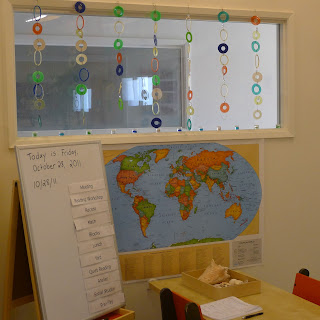Author: admin
Blue Oak Creative Schoolhouse: A New Private School In West LA
|
Carissa Feeney, Blue Oak teacher and Wildwood Mom
|
 The families Carissa expects to attend Blue Oak will live primarily on the Westside. The school is located on Washington Place, West of the 405, just West of Centinela Blvd. She anticipates graduates of the school to apply to The Willows, Wildwood, PS#1, Crossroads, Echo Horizon, Turning Point and other Westside private elementary schools. Families may also be interested in Open Charter and Beethoven Elementary, both public schools. As private school moms, both Lisa and Carissa are committed to helping families navigate the private elementary school admissions process.
The families Carissa expects to attend Blue Oak will live primarily on the Westside. The school is located on Washington Place, West of the 405, just West of Centinela Blvd. She anticipates graduates of the school to apply to The Willows, Wildwood, PS#1, Crossroads, Echo Horizon, Turning Point and other Westside private elementary schools. Families may also be interested in Open Charter and Beethoven Elementary, both public schools. As private school moms, both Lisa and Carissa are committed to helping families navigate the private elementary school admissions process. Tuition at Blue Oak is based on preschool pricing: $1,250/month, from 8:00 a.m-6:00 p.m. From 9:00 a.m-3:00 p.m, the kids will focus on learning and academics. From 3:00 p.m-6:00 p.m, yard activities will take place. Drop off carpool in the back of the school makes it easy for working parents and prevents a parking shortage.
Tuition at Blue Oak is based on preschool pricing: $1,250/month, from 8:00 a.m-6:00 p.m. From 9:00 a.m-3:00 p.m, the kids will focus on learning and academics. From 3:00 p.m-6:00 p.m, yard activities will take place. Drop off carpool in the back of the school makes it easy for working parents and prevents a parking shortage.|
Popular with kids: the light board
|
A Waverly School Dad Writes About Why His Family Loves The Progressive Pasadena K-12 School
The Waverly School arrived in my life like some sort of granted wish. It’s as if I willed it and its staff into existence from my most pie-in-the-sky hopes for my children’s education.
- A modest, energetic place – not too big or small – where children run through the door in the morning shrieking gleefully and run out the door in the afternoon even happier.
- A place where children with unusual personalities or gifts are treated like a delicious bit of variety and are respected for their eccentricity rather than punished for it.
How To Describe Your Child’s "Weaknesses" During LA Private Elementary School Admissions
Do You And Your Spouse/Partner Agree About The Best Type Of L.A. Private Elementary Schools?
 |
| Photo courtesy Bing Images |
Christina, my wonderful and talented stepdaughter, (sidebar: we are on a mission to recast that word in the positive light that reflects our relationship, and that of many other stepmother-stepdaughter relationships) has written recently about the importance of establishing a family message that can be presented consistently to schools as you journey through the elementary admissions process.
Part of this task is to determine whether you and your spouse are really looking for the same thing in the education of your children. It is remarkably easy to think you see things similarly but when you are up against it, perhaps even at an admissions open house, you discover that there are some significant differences in your perceptions or expectations.
It is generally the case that people are comfortable with what they understand. We have all responded to our own upbringing, either by valuing it and wishing to recreate it for our children, or by questioning our own experience and seeking something different. It is very important to have this conversation at home well before you begin to build your family brand and participate in parent interviews.
It is likely that one of you has taken the lead in gathering the necessary information that will determine what schools you visit and apply to. There is a lot of learning that takes place along the way. One example is that you will discover that the best competitive academic schools have come to realize that ‘hands-on’ learning is appropriate and preferred in many instances at the elementary level. Looking for the classroom where children sit quietly in rows and keep their eyes on the teacher in the front of the room who talks may seem familiar, but it does not mean that the best teaching is going on in that school. Be sure that both you and your spouse have the benefit of this new level of understanding that you have found. There are articles on the NAIS (National Association of Independent Schools) website that can help with this need to keep current with what is accepted as “Good Practice” in elementary education.
The importance of you and your spouse/partner being on the same page when it comes to interviews at schools cannot be underestimated. Admissions directors can sense any rift, or even minor difference, between you very easily, and that will create concern immediately. So do your homework – both of you, and have the necessary conversations, even if you don’t think you need to. What you discover will either cement your family message or help you determine the issues that need to be resolved before you can move forward as a united front.
Anne Simon is the co-author of Beyond The Brochure: An Insider’s Guide To Private Elementary Schools In Los Angeles.











